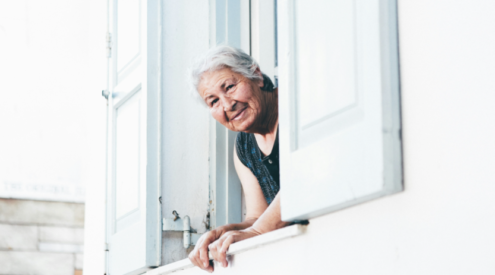I’d heard it said that beer is cheaper than water in Prague. Surely that couldn’t be true? If so, I would have to become a beer drinker overnight because that was my destination and I was on a strict budget.
It was a randomly selected destination and I had no agenda other than to experience an Eastern-European country. Somewhere new that wouldn’t plummet me into the bottomless pit of debt. Prague turned out to be a winning decision.
Here are six ways I discovered Prague without breaking the bank:
1. Soak up the city by joining a walking tour or creating your own

Food stalls, Prague. Image credit: Ilse van den Berg
October is a lovely time to visit Prague. It’s not freezing but it is fresh. And there’s something charming about walking down its thousand-year-old streets, soaking up the mellow autumn colours and admiring the age-old architecture.
As you stroll past street food stalls on your own, or as part of an organised walking tour, the smell of slow-roasted pork and spicy hot wine fills your nostrils. They say the smell of cinnamon sells a house. I’m sure the smell of slow-roasted pork on sidewalks in Eastern Europe could lead to the selling of souls.

Slow Roasted Pork, Prague. Image credit: Ilse van den Berg
The Falkensteiner Maria Prag, located near the infamous Wenceslas Square, is an easy 10-minute walk from the Mustek station – depending on the load you’re lagging across the cobblestoned streets. For me, it was the perfect base-camp since I walked a lot.
Wenceslas Square has seen a great deal of Czech history. In 1969 a university student, Jan Palach, burned himself in protest against the Warsaw Pact invasion, and in November 1989 protest meetings against police brutality were held here which led to the Velvet Revolution and the end of communism in Czechoslovakia.

Wenceslas Square. Photo credit: Ilse van den Berg
It’s really not common in Europe to find a city like Prague that appears untouched by war. The buildings that were affected have been restored to such an extent that you would find it hard to believe there had ever been conflict.
On an underground tour of the Old Town, I was captivated by stories of historical events that have shaped Prague. These include becoming the capital of the Bohemian Kingdom and the Holy Roman Empire in 1346, the Nazi occupation in 1939, the liberation of Prague by the Soviet army in 1945 and more recently there were two extreme floods, in 2002 and 2013.
2. Get captivated by culture

John Lennon Wall. Photo credit: Ilse van den Berg
Beer might be a big part of the culture, but music is even more so. In the 17th and 18th centuries, Prague was known as the conservatory of Europe. In a society silenced by censorship with German occupation and then decades of Communist rule, music was a means of expression, giving it even greater significance.
Wherever I went, I was mesmerised by jazz and blues spilling out of underground bars onto the streets. Musicians made magic with their brass instruments in the town squares, churches served as concert halls after hours and there’s even a dedicated John Lennon wall filled with Lennon-inspired graffiti and extracts from Beatles songs.
4. Don’t shop ‘till you drop

Louis Vutton store, Prague. Image credit: Christian Wiediger
Clothes, electronics, and anything imported for that matter, seemed more expensive in Prague. But that didn’t mean I couldn’t window shop.
Visitors often take a stroll down Na Příkopě street and since I’d been walking the whole day, I decided to take a horse carriage ride down Parizska street, known for its vast collection of haute couture stores such as Dior, Versace and Armani, to name a few.
5. Food, glorious food

Pork Knuckle. Photo credit: Ilse van den Berg
As if the music and architecture aren’t enough, Prague can also brag about its cuisine. I indulged in warm, hearty meals such as goulash, soup, and pork in all its forms: pork ribs, slow-roasted pork, pork knuckle – I could go on.
In the evenings on the walk back to the hotel I induldged in the local sweet treat, Trdelnik, from one of the numerous street kiosks I passed.
Most restaurants have a menu available outside, so I compared at least two before I decided on a restaurant. As a general rule, the further you move from the Old Town (Prague 1), the more affordable everything becomes.
6. Sightseeing on a shoestring

View from Cathedral Tower. Photo credit: Ilse van den Berg
You don’t have to just eat and drink. I managed to fit in the main attractions and was thankful that it didn’t cost me an arm and a leg.
Within the fairytale fortress of Prague Castle – the largest ancient castle in the world – I visited the colossal St. Vitus Cathedral and climbed up the tower for an eagle’s perspective of the city. The historic buildings inside the walls represent virtually every architectural style of the last millennium. The castle grounds and cathedral are free to visit, or around 250-350 CZK (R138-R193) for a tour and to be able to enter the galleries, museums and other restricted areas.
Charles Bridge, which dates back to the 1300s, is probably the number one tourist attraction. It seems as though squeezing through thousands of tourists, artists, and hawkers on this 500m long bridge is everyone’s favourite activity. I’d rather advise to fit it into your schedule as a late night or early morning walk, when there are less people around.

Charles Bridge. Image credit: Dmitry Goykolov
The Astronomical clock in the Old Town square is also free to visit and was first installed in 1410. The four figures flanking the clock are set in motion on the hour and represent four things that were despised: vanity, greed, death, and lust. On the hour, the skeleton rings the bell and immediately all other figures shake their heads, side to side, signifying their unwillingness to go. Above them, there are also statues of the twelve Apostles at the doorways above the clock.
Trip planner
Getting There: A return flight costs roughly R8700. From the airport, take the 119 bus towards the Nádraží Veleslavín stop. From here, take the metro (line A) towards the city centre. A standard 90min ticket costs roughly R18 / 32 CZK.
Getting Around: The city is divided into various districts (Prague 1, Prague 2, etc.) which make it easy to orientate yourself. It isn’t too big so pack comfy shoes and explore by foot. You can also easily grab a public transport ticket from the nearest metro station which you can use for the bus, tram, or train.
Safety: Even though Prague isn’t particularly dangerous, it’s a popular tourist destination. With lots of people comes lots of opportunists for theft, so keep a close eye on your belongings – especially in crowded areas.
Time Zone: UTC +1
More tourist info:
The main tourist office is situated in the Old Town, Rytí ská 12, Staré M sto, Prague 1.
WiFi is readily available
Remember to tip! At least 10%.
Useful links: spottedbylocals.com/prague and prague-underground-tours.com
By Ilse van den Berg






























